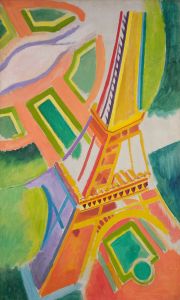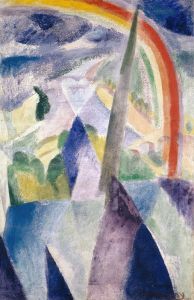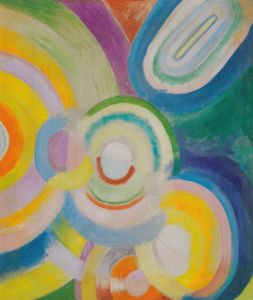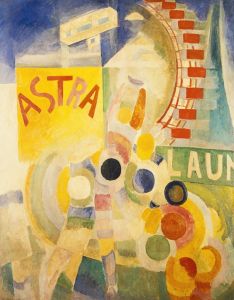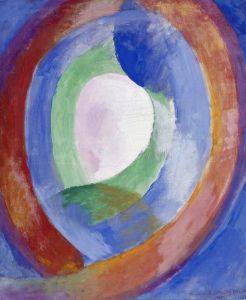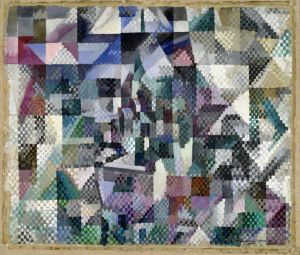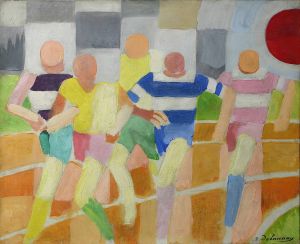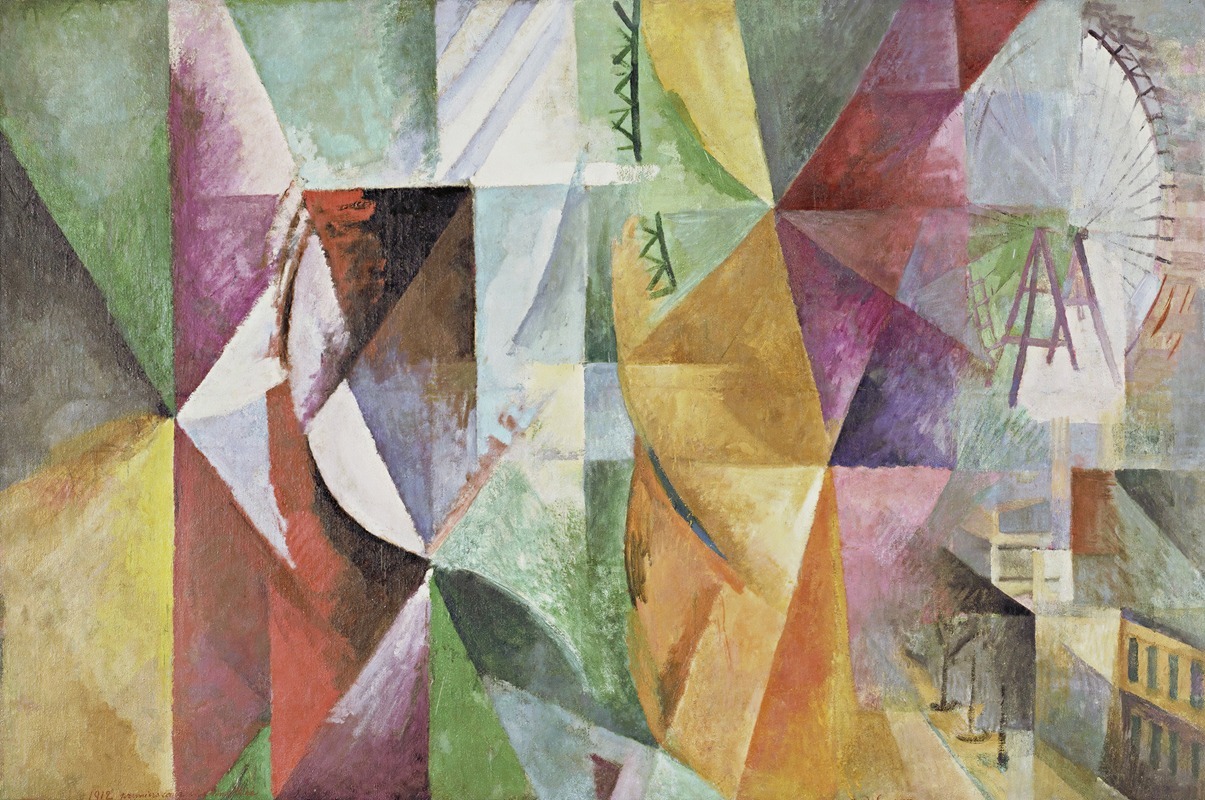
The Three Windows, the Tower and the Wheel
A hand-painted replica of Robert Delaunay’s masterpiece The Three Windows, the Tower and the Wheel, meticulously crafted by professional artists to capture the true essence of the original. Each piece is created with museum-quality canvas and rare mineral pigments, carefully painted by experienced artists with delicate brushstrokes and rich, layered colors to perfectly recreate the texture of the original artwork. Unlike machine-printed reproductions, this hand-painted version brings the painting to life, infused with the artist’s emotions and skill in every stroke. Whether for personal collection or home decoration, it instantly elevates the artistic atmosphere of any space.
"The Three Windows, the Tower and the Wheel" is a painting by the French artist Robert Delaunay, a prominent figure in the early 20th-century art movement known as Orphism. This movement is characterized by its use of vibrant color and abstract forms, aiming to convey a sense of rhythm and movement akin to music. Delaunay, alongside his wife Sonia Delaunay, was instrumental in developing this style, which sought to move beyond the representational confines of Cubism.
Robert Delaunay was born in Paris in 1885 and became known for his innovative use of color and light. His work often focused on the interplay of color and form, and he was particularly interested in how these elements could be used to evoke a sense of dynamism and modernity. Delaunay's fascination with modernity is evident in his frequent depictions of urban scenes and technological advancements, such as the Eiffel Tower, which became a recurring motif in his work.
"The Three Windows, the Tower and the Wheel" is part of Delaunay's series of paintings that explore the theme of the Eiffel Tower. This series reflects his interest in the symbolic power of the tower as a representation of modern Paris and the technological progress of the era. The painting is notable for its abstract composition, which deconstructs the recognizable forms of the Eiffel Tower and other elements into a series of intersecting planes and vibrant colors.
In this work, Delaunay employs a technique that emphasizes the fragmentation of form and the use of color to create a sense of movement and depth. The "three windows" in the title likely refer to the compositional elements that frame the scene, inviting the viewer to look through them and engage with the abstracted forms beyond. The "wheel" could symbolize the circular forms that are prevalent in Delaunay's work, representing motion and the cyclical nature of time and progress.
Delaunay's use of color in "The Three Windows, the Tower and the Wheel" is particularly significant. He was deeply influenced by the scientific theories of color and perception, such as those proposed by Michel-Eugène Chevreul, which emphasized the optical effects of juxtaposed colors. Delaunay's application of these principles results in a vibrant, pulsating canvas that captures the viewer's attention and conveys a sense of energy and vitality.
The painting exemplifies Delaunay's belief in the power of color to transcend the literal and evoke emotional and sensory responses. His work during this period reflects a broader trend in early 20th-century art, where artists sought to break free from traditional representational techniques and explore new ways of seeing and experiencing the world.
"The Three Windows, the Tower and the Wheel" is a testament to Delaunay's innovative spirit and his contribution to the development of abstract art. Through his exploration of color, form, and modernity, Delaunay created a body of work that continues to inspire and influence artists and art enthusiasts alike. His legacy is evident in the continued appreciation of his work and the ongoing relevance of his artistic vision in contemporary art discourse.






